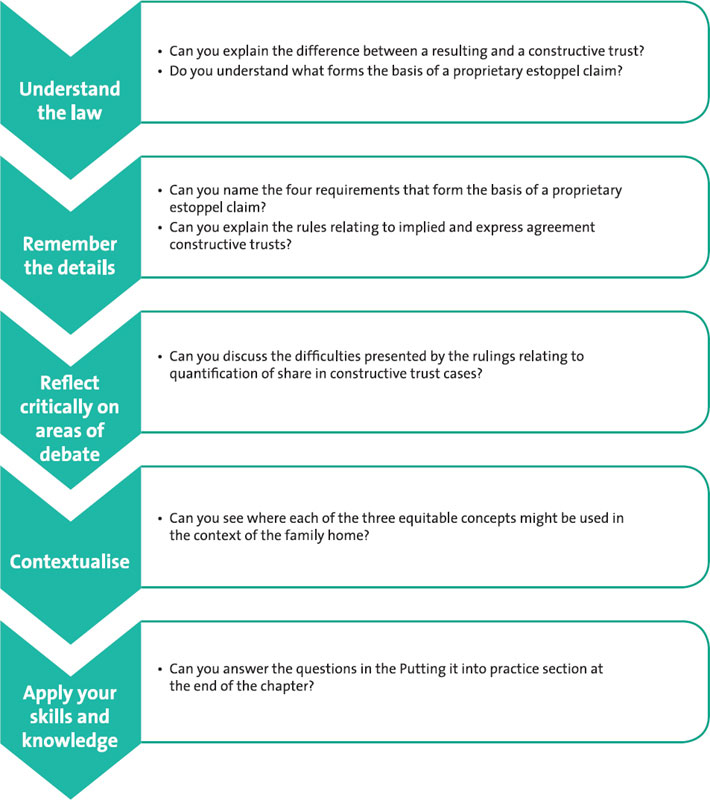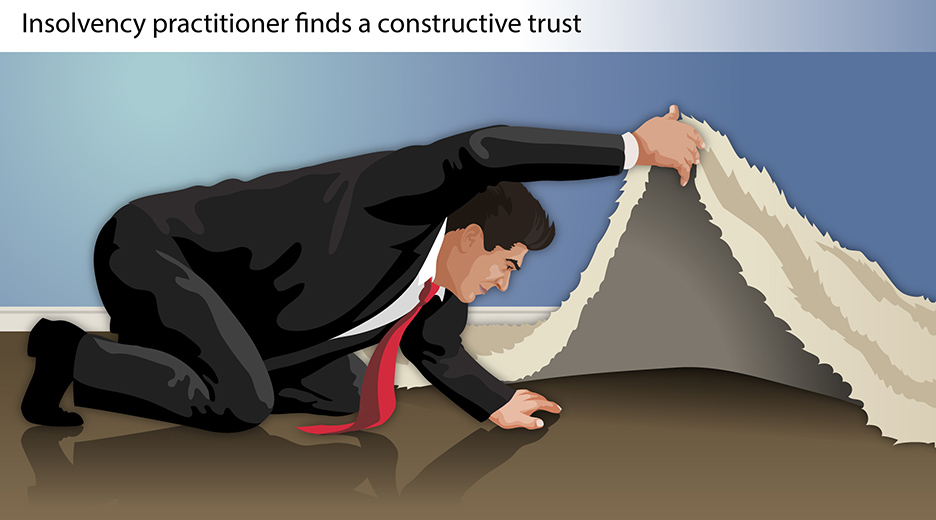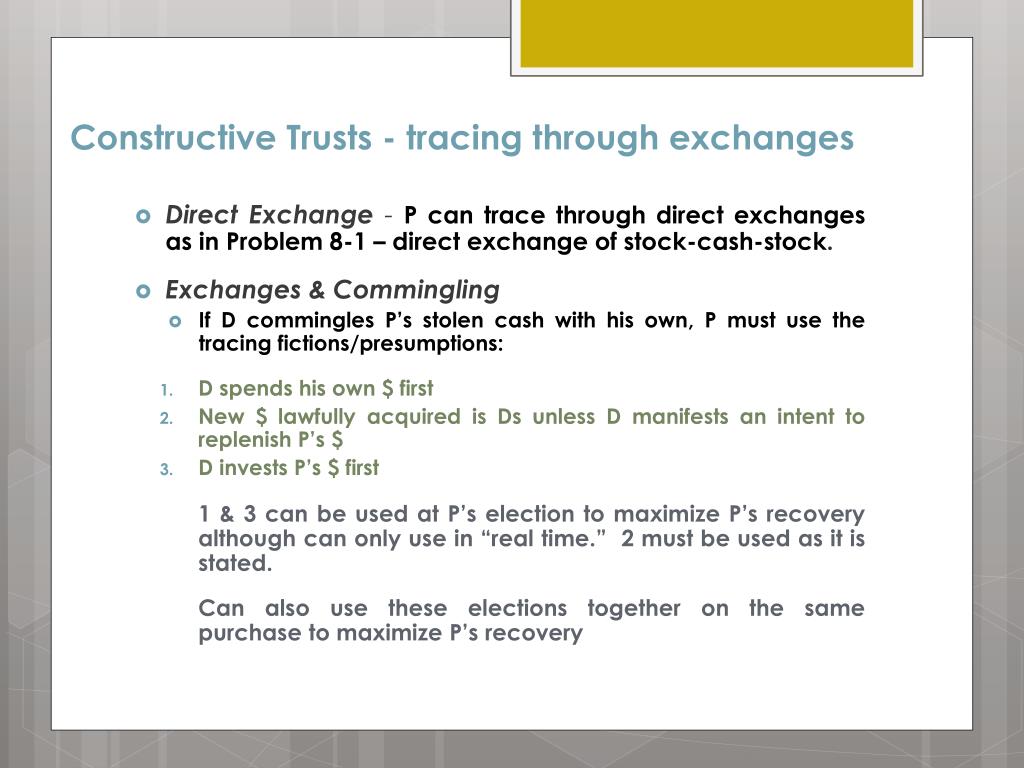Unveiling the Benefits of a Constructive Count On Handling Beneficiary Problems
The principle of a constructive trust fund emerges as a crucial tool in the complex realm of recipient disputes, offering a nuanced option to conflicts that frequently occur from wrongful residential property retention. By cultivating a fiduciary connection between parties, this fair remedy not just assists in speedy resolutions however additionally serves to hinder potential misconduct. As we discover the diverse benefits of positive counts on, one might begin to examine exactly how these devices can improve the landscape of estate disagreements and add to a more equitable distribution of properties among beneficiaries.
Interpretation of Constructive Trust Fund
A positive trust fund is often established by courts to address situations where one party has wrongfully obtained or retained residential property that truly comes from another (What Is A Constructive Trust). This lawful concept is not a conventional trust fund, as it does not require the formalities normally connected with count on development, such as a composed arrangement or the objective of the events included. Rather, a positive depend on develops by procedure of regulation, functioning as an equitable solution to avoid unjustified enrichment
The courts enforce a useful trust fund when it is determined that a person event holds home under conditions that, in equity and excellent conscience, should not allow them to preserve it. Typical scenarios involve deceitful actions, violations of fiduciary duty, or conditions where an event has actually acquired residential or commercial property via incorrect means. The positive trust fund hence operates to secure the rights of the rightful proprietor by making sure that the home is held for their benefit.
As soon as established, the useful depend on needs the event in property of the home to communicate it to the rightful owner, thus correcting the wrongful circumstance. This device emphasizes the lawful system's dedication to justness and justice in home disputes, stressing the importance of ethical conduct in possession and transfer of assets.
Benefits of Useful Counts On
Positive trusts provide a number of substantial advantages in lawful conflicts involving home rights. Mainly, they serve as a fair treatment, allowing courts to address situations where an event has actually wrongfully obtained or preserved residential or commercial property that rightfully comes from another. This establishes a framework for fairness, making certain that the rightful proprietor is made up and the unjust enrichment of the wrongdoer is curtailed.
Additionally, useful trusts can speed up resolution in disputes over estate possessions, therefore minimizing the extensive and typically contentious litigation procedures connected with standard building conflicts. Their flexibility enables courts to customize remedies to fit the details scenarios of each case, which can lead to more satisfactory outcomes for all parties included.
Additionally, constructive trust funds promote openness and responsibility among fiduciaries and recipients, as they need the latter to act in the very best rate of interests of the previous. This strengthens the integrity of fiduciary connections, promoting trust fund and cooperation. By preventing misconduct associated to residential or commercial property possession, constructive trust funds contribute to the overall stability of economic and legal systems, making sure that residential or commercial property legal rights are appreciated and upheld within society.
How Positive Depends On Work

In practice, when a constructive count on is imposed, the court determines the property in question and develops a fiduciary partnership in between the parties involved. The celebration that holds the residential property becomes a trustee, obligated to handle it for the benefit of the rightful proprietor, referred to as the recipient. This partnership is not based upon a formal arrangement but instead on the concept of equity, aiming to fix situations where one celebration's gain directly correlates with another's loss.

Situation Research Studies and Examples
When taking a look at the sensible application of useful trusts, various study illustrate how courts browse intricate circumstances involving unjustified enrichment. One noteworthy instance is * Pettkus v. Becker *, where the High click here to read Court of copyright developed a useful depend on to remedy the unfair enrichment of one event over one more in a long-lasting partnership. The court determined that the contributions of one companion to the procurement of property warranted the imposition of a useful trust, making sure equitable distribution.
Another substantial instance is * Gisborne v. Gisborne *, where the court imposed a constructive depend on to deal with the cases of brother or sisters over their departed brother's estate. The court recognized the contributions made by the brother or sisters in keeping the household residential property, causing a decision that needed the estate to represent those payments, thereby protecting against unjustified enrichment.
These situations exemplify exactly how constructive counts on can successfully deal with conflicts by concentrating on fairness and the prevention of unjustified enrichment. By checking out the specific payments and circumstances of the celebrations involved, courts can apply constructive trusts to achieve simply end results, inevitably strengthening the fair concepts underpinning these lawful mechanisms.

Steps to Develop a Constructive Trust
To develop a useful depend on, numerous essential steps should be followed to guarantee that the case is validated and legitimately recognized. First, the plaintiff should show the presence of a fiduciary partnership or a scenario that requires the charge of a constructive count on, such as fraudulence, unfair enrichment, or a violation of obligation.
Second, it is important to gather and existing compelling proof that sustains the insurance claim. This consists of paperwork and testimonies that show the conditions causing the alleged wrongful retention of home or advantages by the trustee.
Third, the complaintant should file a request in the suitable court, verbalizing the grounds for requesting the imposition of a constructive depend on. This petition must describe the specifics of the relationship and the unfair enrichment that requires the depend on.
Conclusion
Finally, constructive trusts stand for a critical equitable remedy in the realm of recipient disputes, effectively attending to wrongful home retention and protecting against unjustified enrichment. By developing a fiduciary relationship, these trusts enhance transparency and responsibility amongst building owners. The expedited resolution of estate disagreements and the discouragement of misbehavior add to better stability within legal and monetary systems. Inevitably, constructive depends on promote justness amongst recipients, making sure that rightful ownership is preserved and shielded.
A useful trust fund this page is regularly developed by courts to resolve scenarios where one party has wrongfully gotten or maintained home that truly belongs to another.The courts enforce a positive trust fund when it is established that one celebration holds building under situations that, in equity and great conscience, need to not allow them to keep it. By dissuading transgression associated to building possession, useful counts on contribute to the general stability of financial and lawful systems, guaranteeing that residential property rights are valued and upheld within culture.
In method, when a positive trust is imposed, the court determines the building in concern and develops a fiduciary connection between the parties entailed. What Is A Constructive Trust. The court identified that the payments of one partner to the procurement of property warranted the charge of a positive trust fund, making hop over to these guys certain fair distribution